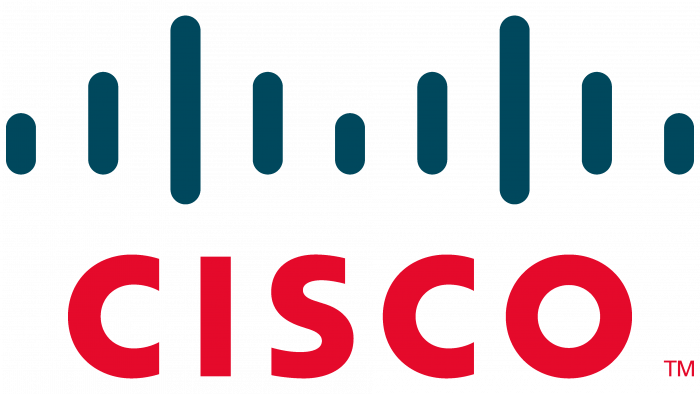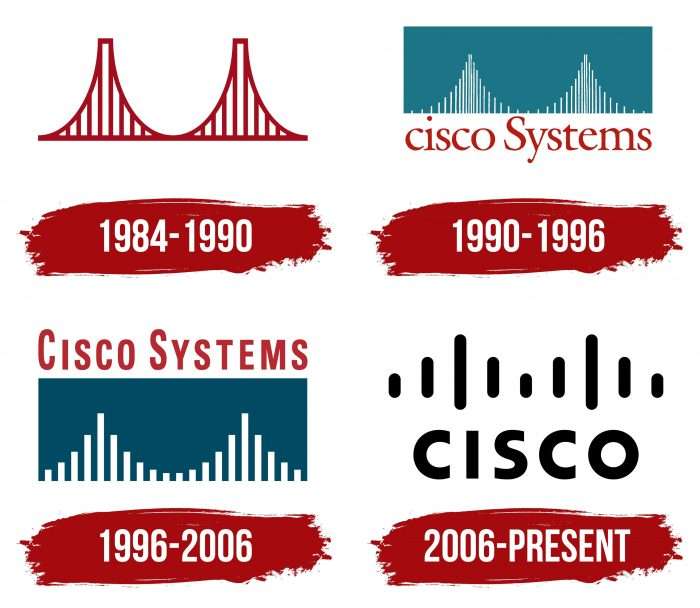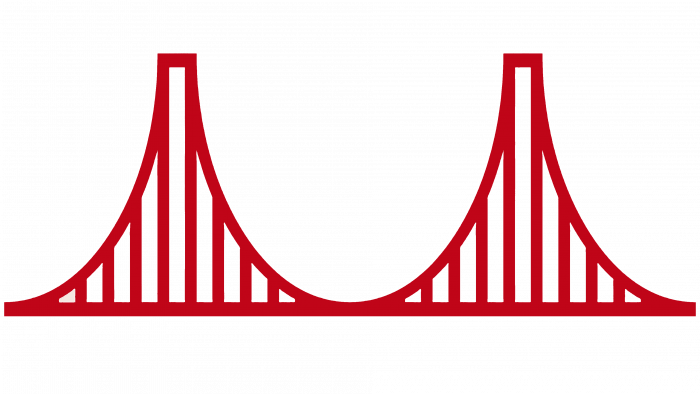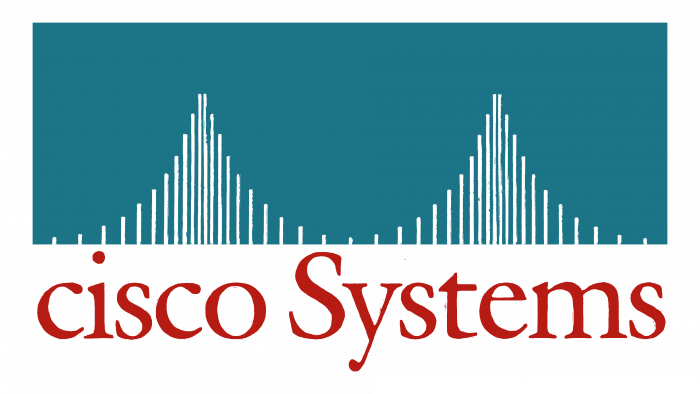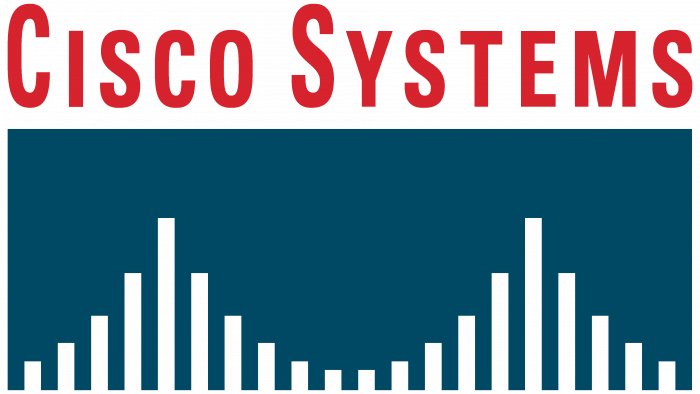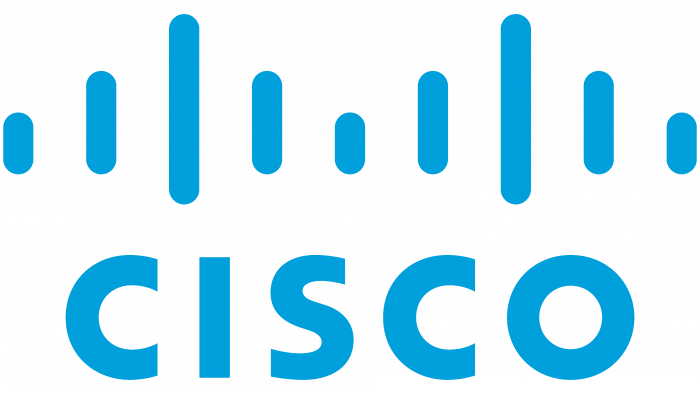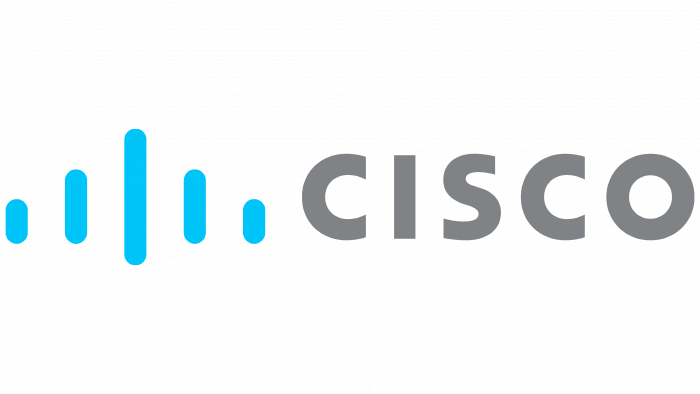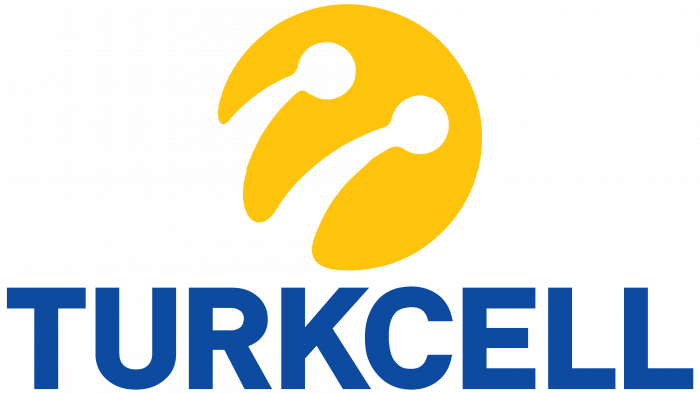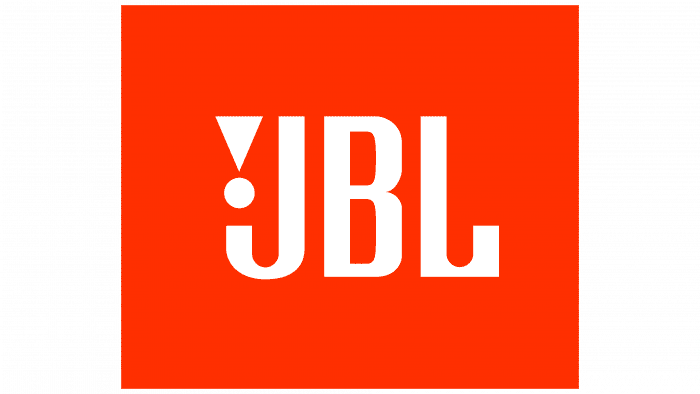The company emblem splatters with energy and vigorous activity. The Cisco logo shows how, through active processes associated with developments and inventions, necessary and useful products are born that improve mankind’s lives.
Cisco: Brand overview
Meaning and History
The IT company appeared thanks to the efforts of Sandy Lerner and Leonard Bosack, who were not only scientists but also spouses. Sandy was head of the computer hardware department at Stanford University Graduate School of Business, and Leonard was in charge of the computer science department at the same university. They co-developed local area network (LAN) technology, founding Cisco independently.
However, in 1986, they were forced to leave the university because the administration decided to file criminal lawsuits against scientists for the appropriation of programs, equipment, and other intellectual property that did not exist. It’s just that Lerner and Bosack used their facilities to create their IT products. A year after being fired, Stanford University gave them the software of a multi-protocol router and two computer boards. In addition to the two scientists, the early team included programmer Greg Satz, sales manager Richard Troiano, and CEO Bill Graves.
In the company’s name, its founders reflected their love for San Francisco, using the Golden Gate Bridge tower and a slightly new version of the city name for the logo. This idea was proposed by John Morgridge (second head of the firm). The concept of the logo is to connect distant objects with the help of technological innovations. In total, the corporation has four logos in its arsenal.
What is Cisco?
It is one of the world’s largest manufacturers of computing and telecommunications equipment. Its products are designed primarily for companies that offer their customers communication services. Cisco was founded in 1984.
1984 – 1990
The debut symbolism accurately conveys the image of the iconic bridge’s observation towers. They are depicted as digital graphs and consist of thin lines of different lengths, united at the top and bottom by solid stripes: on one side, they have a curved shape, and on the other—they are straight. The tops of the red structures are not pointed and look like miniature platforms. The emblem has no text—it was used only on nameplates.
1990 – 1996
The emblem received a different color and style due to the identity revision. The bridge has acquired abstract features and consists of white stripes of different heights. It has no connecting elements—only a blue background in a rectangle. At the bottom is a red-colored Cisco Systems label—elongated, elegant letters from the Sans Serif category.
1996 – 2006
After the undertaken redesign, the logo looks neater. The regrouping of the elements facilitated this. The vertical stripes have become even, clear, and reduced in number. Due to their increased width, they are smaller than before but take up the same space from edge to edge of the blue rectangle. The designers moved the inscription higher, making the letters large. In the word “Cisco,” they replaced the uppercase “C” with a capital letter since it was previously in lowercase.
2006 – today
To achieve a clear shape of the Internet signal reception bands and, at the same time, preserve the appearance of the legendary bridge, the developers have lengthened the two highest lines. Moreover, they were widely spaced, so much free space was formed between them. The company name is at the bottom and in lowercase. The designers removed the horizontal rectangle, offering three color options for the logo: black, light blue, and dark blue with red text. The authors of this version are Joe “Phenom” Finocchiaro and Jerry “The King” Kuyper.
Cisco: Interesting Facts
Cisco Systems, Inc., more commonly known as Cisco, is a major player in the tech industry. It focuses on networking, cybersecurity, and telecommunications. Founded in 1984 by Leonard Bosack and Sandy Lerner from Stanford University, Cisco has significantly influenced the internet’s framework.
- Name Origin: Cisco is named after San Francisco, its birthplace. Its logo, reflecting the Golden Gate Bridge, pays tribute to this origin.
- Networking Breakthrough: Cisco’s debut product was a multi-protocol router, which allowed different network protocols to communicate, akin to translating between languages. This was vital in the internet’s early days.
- Internet Development: Cisco played a critical role in developing and expanding the Internet, with its routers handling a significant portion of global Internet traffic in the 1990s.
- Growth Through Acquisitions: Cisco has acquired over 200 companies to diversify its products, enter new markets, and integrate new technologies.
- Cybersecurity Pioneer: In 1994, Cisco launched the PIX Firewall, marking its entry into cybersecurity as one of the first successful firewall products.
- Educational Initiatives: Cisco created the Cisco Networking Academy in 1997, providing IT and career-building programs globally. This program has trained millions in networking and cybersecurity.
- Fortune 100 Recognition: Cisco is a Fortune 100 company celebrated for its financial performance, global influence, innovative approach, quality management, and social responsibility.
- Corporate Social Responsibility: Cisco is involved in social projects, including disaster response, healthcare, and education, showcasing its commitment to societal well-being.
- Adapting to Changes: Cisco has adapted to shifts in the market and technology, transitioning from a hardware focus to software and cloud services to meet the digital world’s evolving demands.
Cisco’s growth from a small startup to a leading force in networking and cybersecurity demonstrates its innovative spirit, strategic expansion, and dedication to making the digital world more connected and secure. Its technologies are fundamental to the Internet’s infrastructure, affecting businesses, governments, and individuals globally.
Font and Colors
From the very beginning, the founders of the IT company focused on simple and understandable visualization. They chose a California landmark—the Golden Gate Bridge in San Francisco. The authors always emphasize combining the bridge with the signal reception diagram of the Internet connection to demonstrate their products’ utility, usefulness, and practicality.
The modern version of the logo uses a geometric typeface called Futura Bold. It is smooth and grotesque, with even cuts at the ends. Designer Paul Renner created it and first published it by Linotype.
The current emblem’s color scheme echoes all previous modifications because it exists in three versions. One logo is black, the second is blue, and the third consists of blue stripes and red lettering. The background is a neutral white color.
FAQ
Which bridge is the Cisco logo?
The bridge symbol in the Cisco logo represents the Golden Gate Bridge. This iconic structure is part of the brand, reflecting its roots in San Francisco. The logo features thick vertical lines that form an abstract Golden Gate Bridge. These lines resemble symbols for Wi-Fi and networks, which are critical to the company’s industry. This design emphasizes the company’s principles of networking and promoting communication.
Is Cisco an IT company?
Yes, it’s an IT company. It offers many technology innovations, including networking, security, collaboration tools, and cloud management. As a network technology company, the brand has developed and refined the infrastructure that supports the Internet and enterprise networks. The brand is a leader in the IT sector, delivering innovative solutions that help securely connect and empower industries and communities worldwide.
Who made the Cisco logo?
John Morgridge, one of the company’s leaders, created the original logo. His vision created an iconic symbol reflecting the brand’s mission and values.
In 2006, designers Jerry Kuyper and Joe Finocchiaro updated the logo, giving it a modern look. They retained the essence of the original design while adding contemporary elements to reflect the evolving technological environment.
The new logo features a simplified abstract image of the Golden Gate Bridge using thick vertical lines. These lines symbolize the iconic bridge and universal signals for Wi-Fi and networks, combining the brand’s geographic roots with its technological focus. The redesign was part of a larger effort to strengthen the company’s image as a technology leader. This approach ensures that the logo remains relevant to existing and new audiences.
What does the Cisco logo symbolize?
The logo is rich in symbolism, reflecting the brand’s heritage and core business. It features vertical lines reminiscent of radio waves, indicating the company’s focus on networks and telecommunications. It symbolizes the Golden Gate Bridge in San Francisco. This connection nods to the company’s roots and serves as a metaphor for its mission. The logo originally depicted the Golden Gate Bridge more explicitly but evolved into a more abstract shape. This dual symbolism of radio waves and the Golden Gate Bridge reinforces the brand’s identity as it strives to create seamless and reliable connections in the digital age.
Is Cisco a brand?
Yes, it is a globally recognized brand in information technology and networking. Its distinctive name, logo, and icon system are protected by copyright. The name comes from San Francisco, reflecting the company’s origins and connection to the Golden Gate Bridge, symbolized in its logo. It offers a comprehensive portfolio of products and services, including networking, security, collaboration tools, and cloud management technologies. These solutions help businesses and communities securely connect and collaborate.
